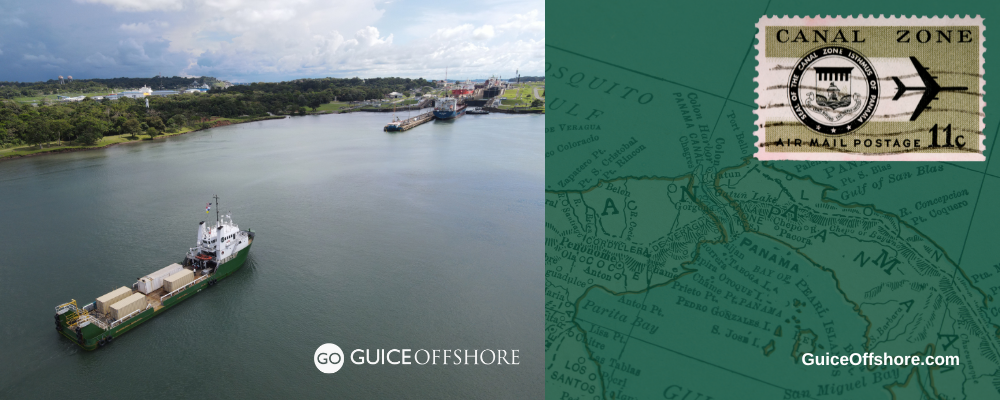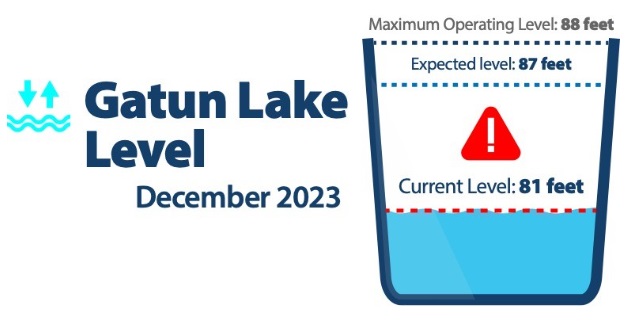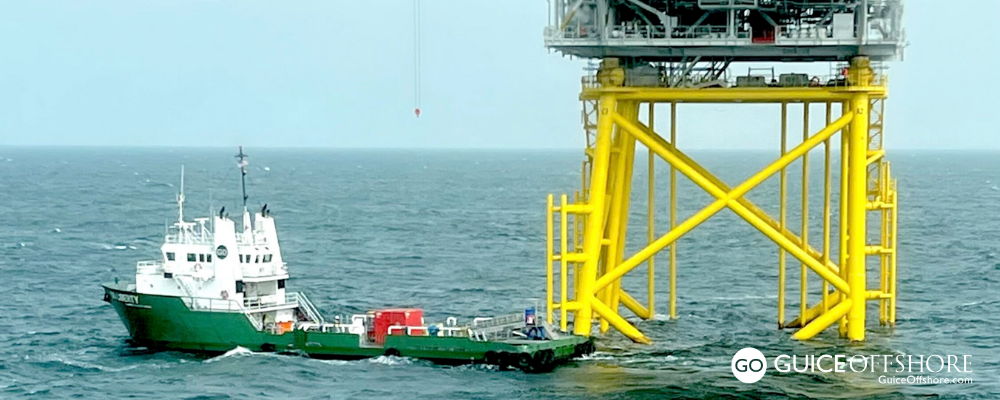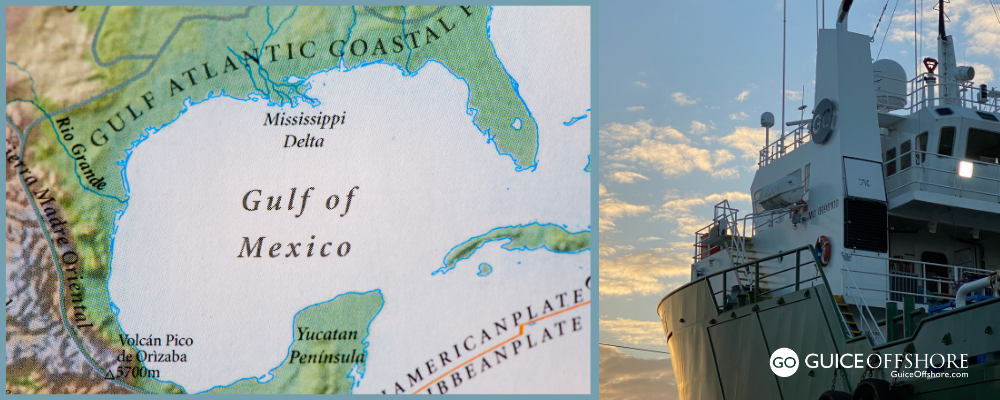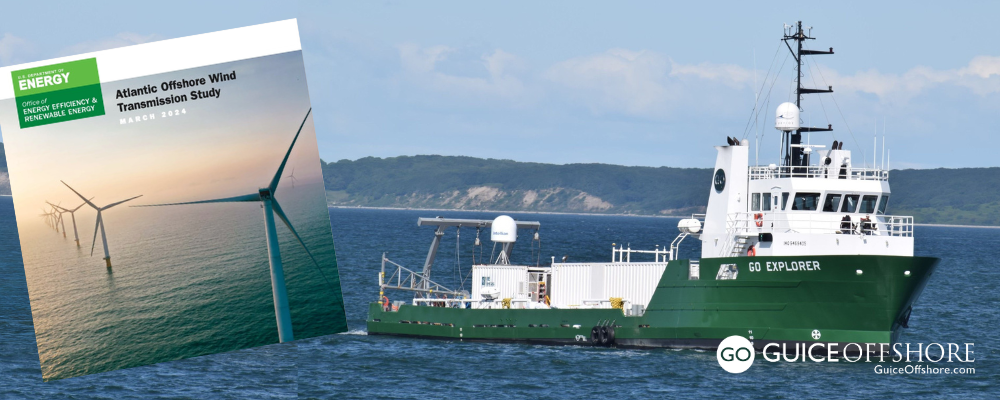- Read more about the Panama Canal and watch a video of Guice Offshore’s GO Quest crossing the Canal’s famed Gatun Locks HERE.
To preview what’s in store for 2024, the Panama Canal Authority provided an update to international maritime associations with Panama Canal Administrator Ricaurte Vásquez Morales and Deputy Canal Administrator Ilya Espino de Marotta, who detailed the current outlook of the Panama Canal, the sustainability of the route, short and long-term projects, as well as the most recent measures implemented to save water.
Click on the video bellow to watch the one-hour session, including questions and answers.
Guice Offshore Certifications, Capabilities and Crew Meet Tough Standards for Both International, Bi-Coastal Jobs
Guice Offshore vessels regularly traverse the legendary Panama Canal, which is one of the original “Seven Wonders of the World” as designated by the American Society of Civil Engineers.
“Guice Offshore is unique in that we have the technical knowledge and industry experience that enables us to safely navigate that type of voyage and operate in international waters,” explained Guice Offshore Principal Billy Guice. “Unlike others in our vessel class, Guice Offshore boats have the right Coast Guard certifications, capabilities and trained crew to operate on both the United States’ east and west coasts, and also travel into international waters.”
Guice Offshore vessels are all dually certified by the U.S. Coast Guard for Subchapter L&I and thus approved for full international operations to support a full spectrum of marine industries, which includes making the complex passage through the Panama Canal’s 50-mile long international waterway to bring critical equipment from coast to coast in North, South and Central America.
The Panama Canal’s series of canal locks allows ships to pass between the Atlantic Ocean and Pacific Ocean, thus saving a vessel about 8,000 additional miles (12,875 km) that would otherwise be required around the southern tip of South America by Cape Horn.
“One of our competitive advantages at Guice Offshore is having a fleet of vessels in our class size that can actively engage in supporting clients on both coasts of both hemispheres,” Guice noted. “You can’t just send any random vessel through the Panama Canal. It has to be properly crewed and appropriately certified. Guice Offshore provides both.”
For a list of questions and answers about the Panama Canal, click here.
Panama Canal to increase daily transits to 24 starting in January
Through Advisory to Shipping No. A-54-2023, the Panama Canal announced during December 2023 that it will increase the number of daily transits to 24 starting in January, for the benefit of its customers. Projections at the end of the rainy season allowed for an increase of 6 daily slots.
- To read about strategic measures taken by the Panama Canal Authority to conserve water, click HERE.
Currently, 22 vessels transit the Panama Canal daily, divided into 6 Neopanamax and 16 Panamax. This restriction is in response to the challenges posed by the current state of Gatun Lake, which is experiencing unusually low water levels for this time of the year due to the drought induced by the El Niño phenomenon.
| Type of Vessel | Regular Scenario | Current Period | January 2024 |
| Neopanamax | 10 | 6 | 7 |
| Panamax | 26 | 16 | 17 |
| TOTAL | 36 | 22 | 24 |
October 2023 marked the driest October on record for the Canal Watershed. In anticipation of a potential worsening of the situation in November and December, the decision was made to adjust the number of daily transits to 22 in December, 20 in January, and 18 in February. This year marks the first time the Canal has ever had to restrict transits.
However, as rainfall and lake levels for November proved to be less adverse than expected, coupled with the positive outcomes from the Canal’s water-saving measures, the adjustments announced today will replace the Advisory to Shipping No. A-48-2023 of October 30.
Additionally, the Panama Canal will allow one booking slot per customer per date, with some exceptions for quotas offered to vessels competing through the reservation system.
These measures allow the majority of vessels that want to transit the Canal to have a better chance of obtaining a reservation.
Canal specialists are closely monitoring the current water crisis, and the measures announced today, published in the Advisory to Shipping, will go into effect January 16, 2024, and remain in effect until conditions warrant changes, which will be announced in a timely manner.
As 2023 is the second driest year in recorded history of the Panama Canal Watershed, the Canal has implemented an operational strategy focused on water conservation and transit reliability in the face of low rainfall and the consequent decrease in lake levels.
These measures, together with direct and proactive communication with customers, have proven essential in adapting to the difficult climatic circumstances.
About the Panama Canal Lake System
The Gatun and Alhajuela Canal Lake System stores water primarily intended for meeting the needs of the population and ensuring the smooth operation of the canal. Additionally, stored water is utilized for various purposes, including electricity generation and fostering the nation’s economic activities.
Water extracted from this system undergoes treatment to meet drinking water standards and is distributed to over 50% of the country’s population residing in the districts of Panama, San Miguelito, Arraijan, Chorrera, and Colon. Currently, eight water treatment plants extract water from Gatun Lake, with two more under construction. The Federico Guardia Conte water treatment plant, the largest in the country, draws water from Alhajuela Lake.
Please refer to the following links from the Panama Canal for real-time information:
- Vessels in queue for transit
- Real-time Weather Radar Animation (updated every 5 minutes)
- Daily average level of Alhajuela reservoir for the last 12 months
- Daily average level of Gatun Reservoir for the last 12 months
- Daily precipitation (rainfall) by sub-basins (Alhajuela/Gatun) and cumulative in CHCP current year 2023
- Advisory to Shipping
